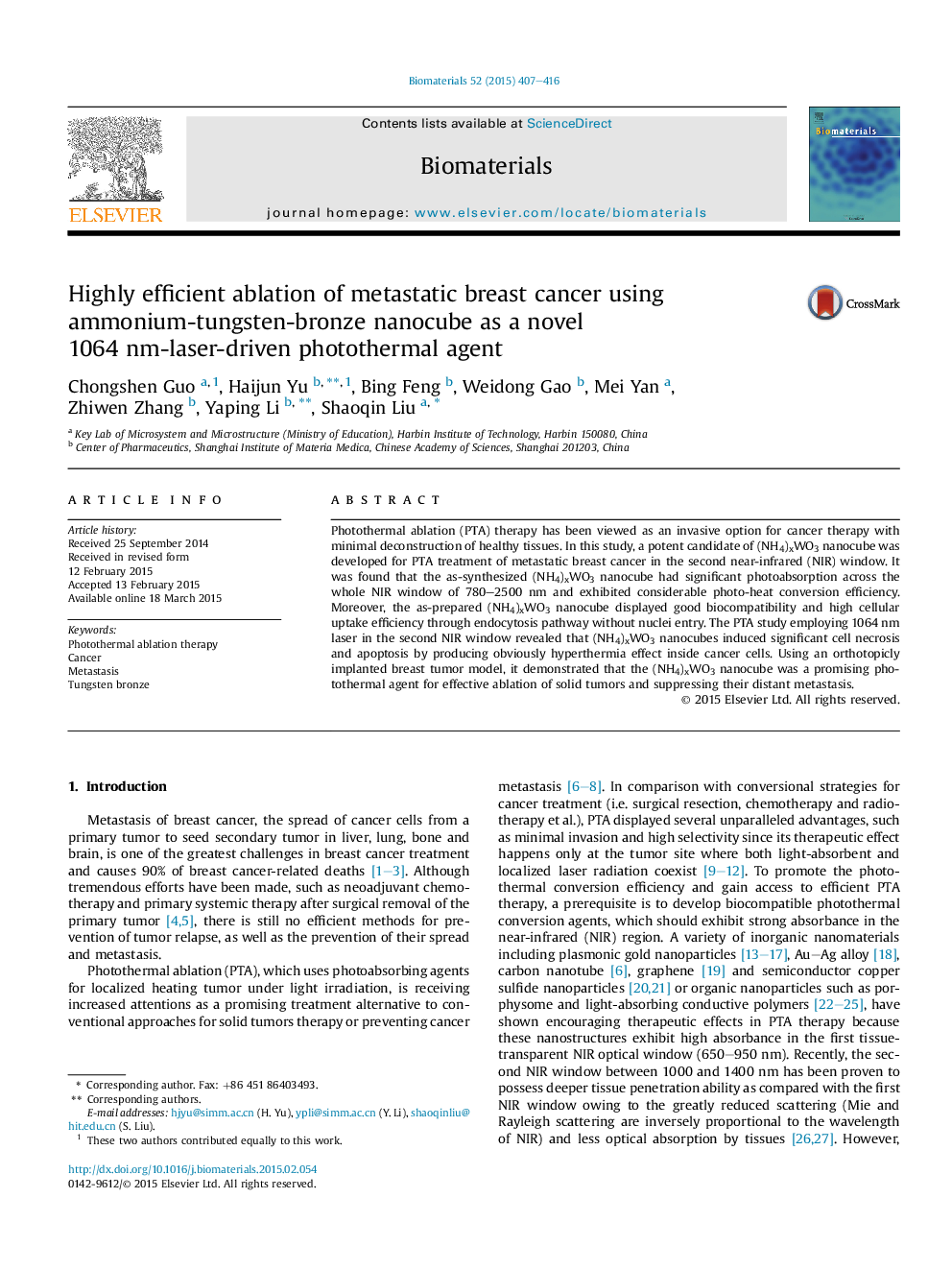| Article ID | Journal | Published Year | Pages | File Type |
|---|---|---|---|---|
| 6486066 | Biomaterials | 2015 | 10 Pages |
Abstract
Photothermal ablation (PTA) therapy has been viewed as an invasive option for cancer therapy with minimal deconstruction of healthy tissues. In this study, a potent candidate of (NH4)xWO3 nanocube was developed for PTA treatment of metastatic breast cancer in the second near-infrared (NIR) window. It was found that the as-synthesized (NH4)xWO3 nanocube had significant photoabsorption across the whole NIR window of 780-2500Â nm and exhibited considerable photo-heat conversion efficiency. Moreover, the as-prepared (NH4)xWO3 nanocube displayed good biocompatibility and high cellular uptake efficiency through endocytosis pathway without nuclei entry. The PTA study employing 1064Â nm laser in the second NIR window revealed that (NH4)xWO3 nanocubes induced significant cell necrosis and apoptosis by producing obviously hyperthermia effect inside cancer cells. Using an orthotopicly implanted breast tumor model, it demonstrated that the (NH4)xWO3 nanocube was a promising photothermal agent for effective ablation of solid tumors and suppressing their distant metastasis.
Keywords
Related Topics
Physical Sciences and Engineering
Chemical Engineering
Bioengineering
Authors
Chongshen Guo, Haijun Yu, Bing Feng, Weidong Gao, Mei Yan, Zhiwen Zhang, Yaping Li, Shaoqin Liu,
